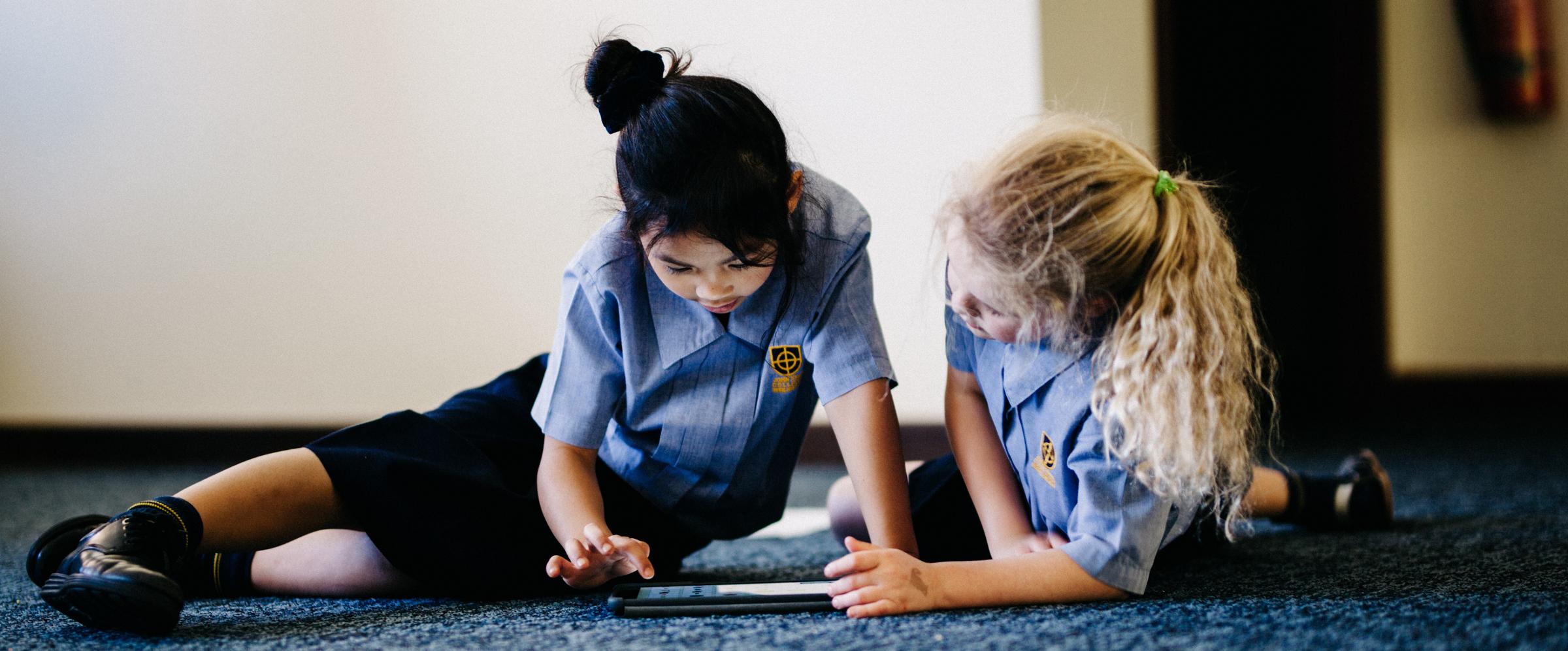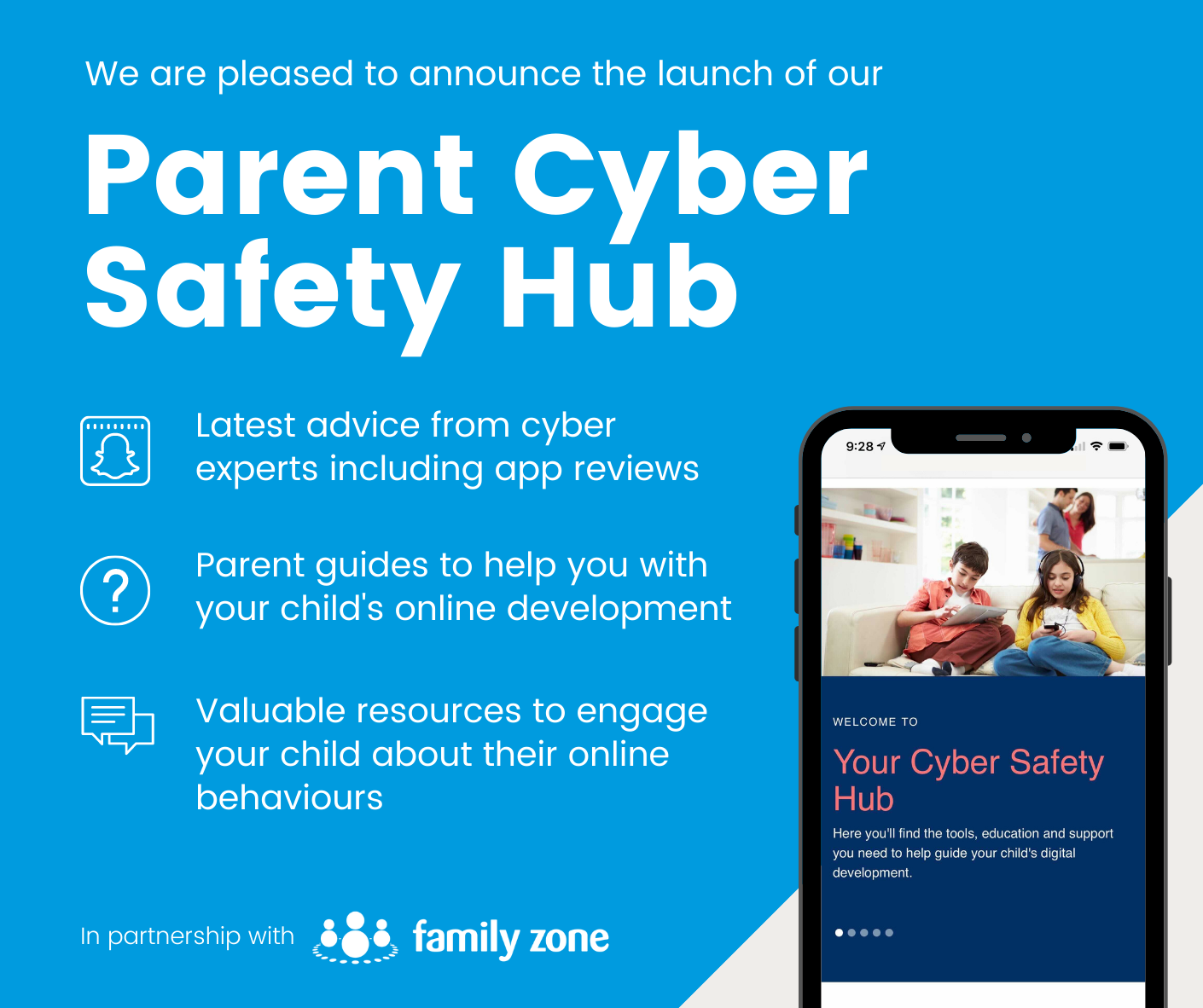Cyber Safety

Check out our Cyber Safety Hub
We are delighted to introduce you to a new resource made available to you through our partnership with Family Zone - our new school Cyber Safety Hub.
As you may already be aware, our partnership provides your family with access to the Family Zone tools to use at home with your children if you wish. The purpose of the Cyber Safety Hub is to complement those tools with practical guidance and information to further support you in engaging with your children in their digital development. These tools and resources also allow the school and parent body to work together on creating a holistic approach to guiding each student's online journey.
You can access the Cyber Safety Hub using the link below:
https://johnxxiii.cybersafetyhub.com.au/
About the Parent Cyber Safety Hub
The Cyber Safety Hub includes resources to help your family better understand the different Family Zone tools available to you and how to use them, plus access to regular cyber safety events to help you stay informed about the latest digital trends.
Also, the Cyber Safety Hub provides expert advice from leading cyber experts, ySafe, on the most pertinent issues and frequently asked questions around platforms like TikTok, Fortnite, Instagram, and more. There are app reviews with age and safety recommendations, along with a range of guides to help ensure healthy boundaries around screen-time & gaming, plus step-by-step instructions for using parental controls and filtering out inappropriate content.
We are very excited to be able to offer you this level of expertise and support. We look forward to working closely with you as we develop the cyber safety conversation within our school community.
How NOT to talk to your child about online safety
Having difficult conversations with our kids is ... well, difficult. And having difficult conversations about staying safe and healthy online is arguably the most difficult parenting feat of them all.
Here’s a primer on how NOT to open up a great conversation - and what to do instead.
The parenting manual How to talk so will kids listen - and listen so kids will talk by Adele Faber and Elaine Mazlish has been a perennial best-seller since it first hit the shelves some 40 years ago.
It’s not hard to see why. The title alone exerts an irresistible pull for any mum or dad who has struggled to hold the attention of a child … which is to say, for every mum and dad.
And the problem is especially acute when it comes to conversations about safety.
Needless to say, our children’s safety is our number-one responsibility as parents - and our anxiety about possible risks our number-one fear. But persuading kids to heed our warnings - hell, persuading them even to hear them - can be an uphill climb.
To their ears, our fears - which you and I know are based on fact and experience - often feel like paranoid or just plain silly.
(I remember clearly thinking that my mother’s warnings about not taking candy from strangers was outlandish. Why on earth, I wondered, would a person be so foolish as to give away chocolate bars and lollipops? It just made no sense. Of all things for my mother to worry about - why this?)
Even worse, parental concerns can come across to a child as judgmental or blaming - and questions, no matter how gently put or genuinely motivated, can be heard as accusations.
And when kids feel judged or shamed, they respond exactly the same way adults do when they feel judged or shamed: They shut down. They say as little as possible. They look for an excuse to exit the conversation and the discomfort.
In the digital world we find ourselves in today, it’s not just risks to our kids’ physical safety we worry about (although frankly that too has been heightened with the rising incidence of online predators). It’s their emotional, psychological and spiritual or moral safety too.
But here’s the problem: Facts will not get your child to listen. Preaching - no matter how well informed - will almost inevitably accomplish the opposite of what you set out to do.
Cyberbullying, sexting, pornography, the toxic “comparison culture” of social media - not to mention exposure to violence and hate speech. And thanks to abundant options for interactive chat, what used to be called “stranger danger” is now part of nearly every digital child’s daily reality.
These are the facts of online life. And, sure, you could probably cite studies and statistics to back up your case for caution. But here’s the problem: Facts will not get your child to listen.
Preaching - no matter how well informed - will almost inevitably accomplish the opposite of what you set out to do: Have an open, honest exchange that will help you understand your child’s experience - and is the best guarantee of keeping them safe.
What to do instead
So keep the moral indignation to yourself (however much you might be feeling it). Instead, try writing out a script of conversation-starters that use judgment-free language, like these:
Don’t say: DO YOU TALK TO STRANGERS ONLINE?
Instead, say: HAVE YOU EVER CHATTED WITH A FRIEND ONLINE THAT YOU DON’T KNOW IN REAL LIFE?
Don’t say: HAVE YOU EVER BEEN CYBERBULLIED?
Instead, say: HAVE ANY OF YOUR FRIENDS BEEN BULLIED ON SOCIAL MEDIA? or DO YOU KNOW ANYBODY AT SCHOOL WHO BOTHERS OTHER PEOPLE ONLINE?
(Note: It’s always easier to talk about “friends” than it is about yourself!)
Don’t say: PORNOGRAPHY IS EVERYWHERE ONLINE. I ONLY HOPE YOU HAVE THE GOOD SENSE NOT TO WATCH IT.
Instead, say: DO YOU SOMETIMES SEE STUFF ONLINE THAT MAKES YOU FEEL UNCOMFORTABLE?
And then ... the next thing you say? Nothing. Nothing at all.
Because the most important hack for having difficult conversations with your kids is listening.
Of course, eventually you’ll want to give some support and guidance. You’ll want to take advantage of teaching moments when they present themselves. But you’ll also want to do that gently, without drama or threats.
Remember: If your child is afraid you’ll take away their device if they tell you the truth - you can kiss the truth goodbye.
Above all, accept that the process of keeping them safe online - and keeping you informed - is an ongoing process. There’s no one-and-done about it.
Reference: https://www.familyzone.com/anz/families/blog/how-not-to-talk-to-your-child-about-online-safety



